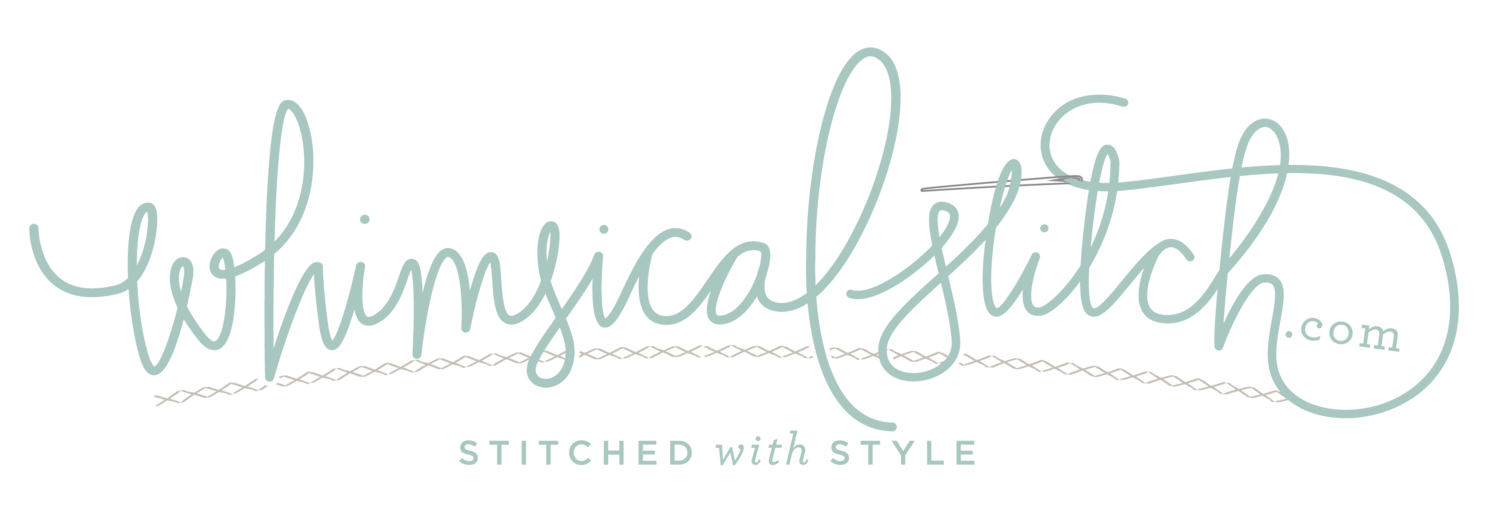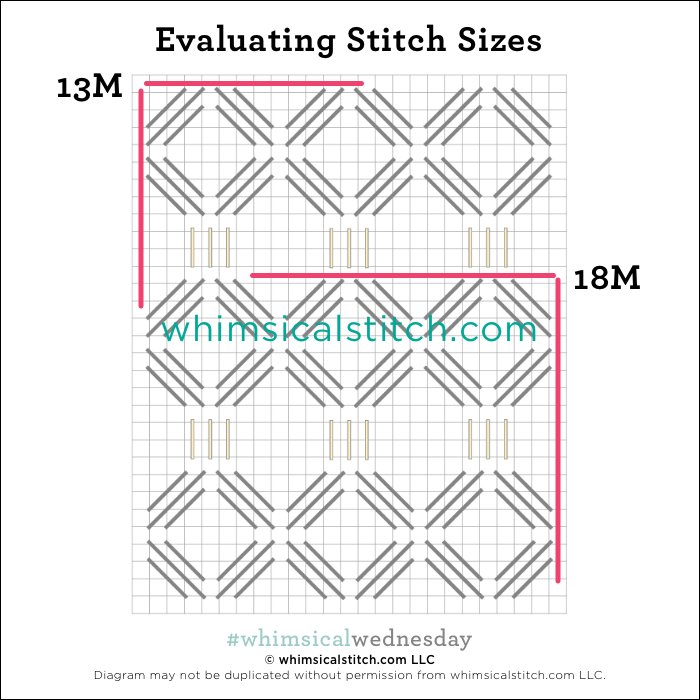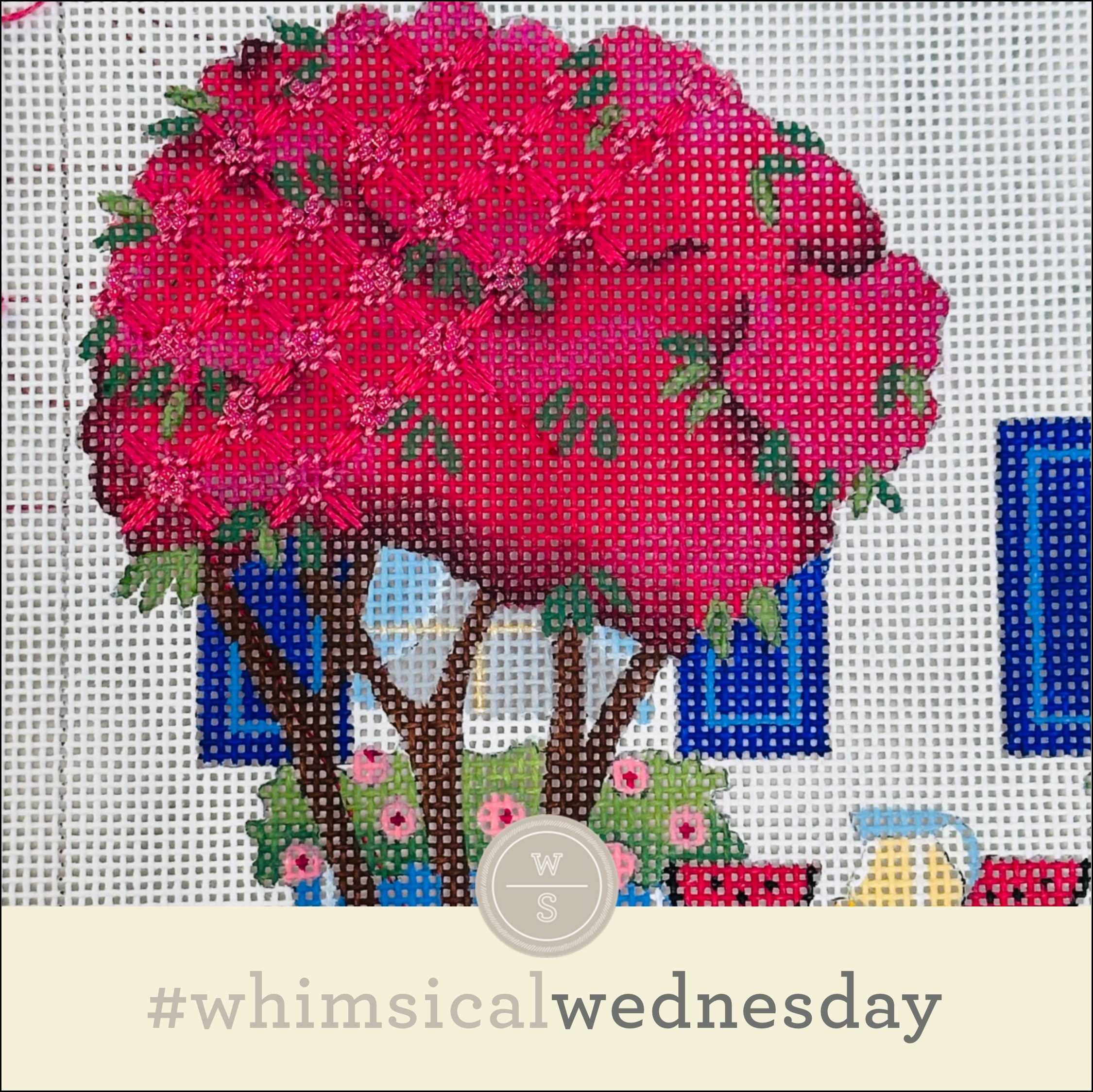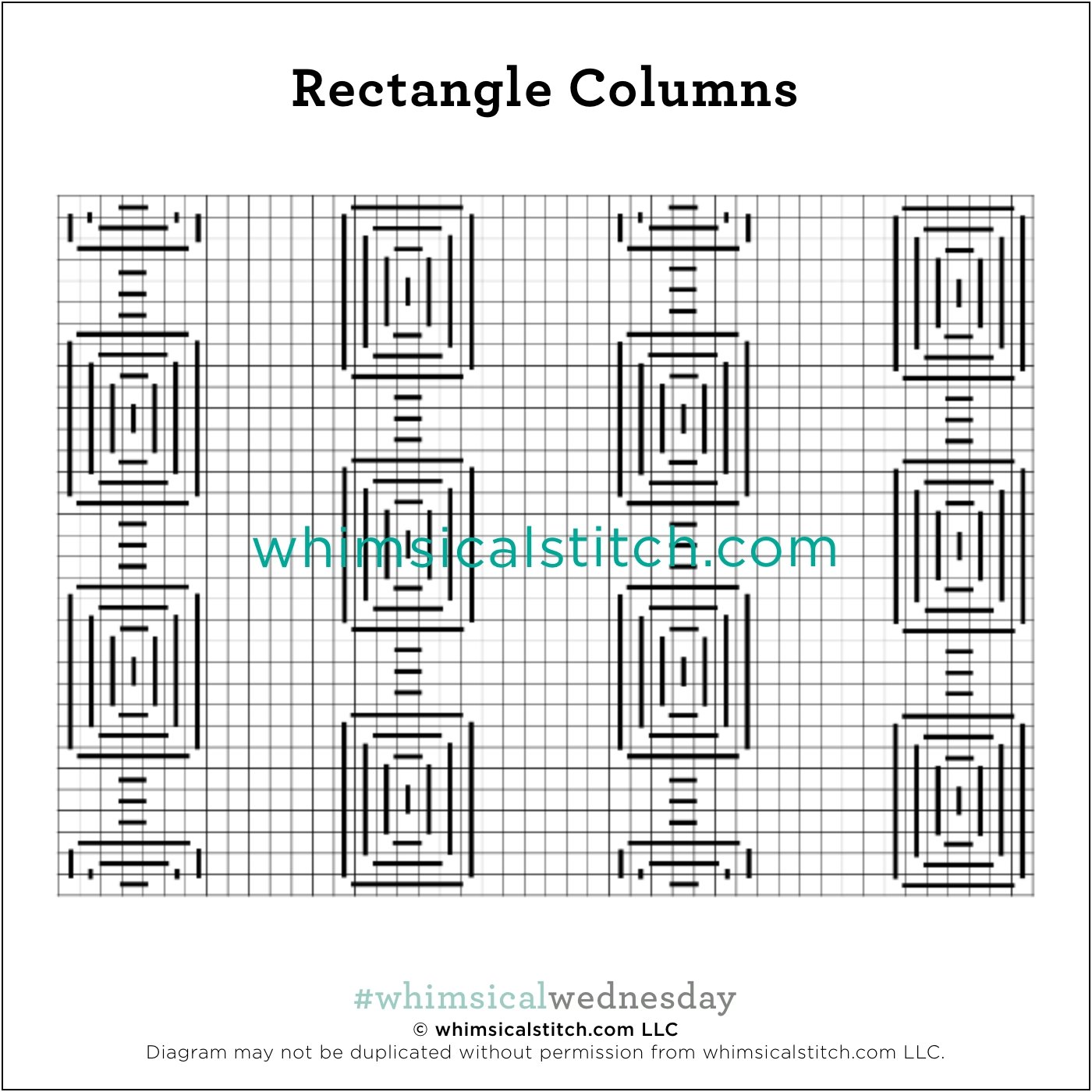Today’s stitch is an example of one I would have never been able to piece together without my occasionally beloved computer. Yes, I had an idea in my head but how the pieces fit together eluded me.
The stitched sample is the background on a striking Colors of Praise leopard and uses a strand of pink Elegance on 18M. I can already identify some variations for future posts. It may very well become the stitch that keeps on giving.
It makes a fascinating background because it is intriguing yet allows other areas on the canvas to shine. For the leopard, the plan is to draw attention to the flowers with silk ribbons, so this background should be a perfect match.
The stitch is an example of blackwork, an embroidery technique that mimics graphic design. The repeated element resembles a short and wide cross. I used two colors in the image on the right to illustrate how those elements fit together. This block on the right is 22 rows tall and 22 rows wide. That’s almost two square inches on a 13M canvas. Keeping all of that open space clear was a puzzle.
I used a technique I call pivoting. The sequence alternates back and forth between shared holes to create an open stitch without dragging threads across the canvas. Full disclosure. I had absolutely no shame in dragging threads across the areas in between the tiny squares where the groups of stitches meet (illustrated by the gray squares).
I hope the sequencing notes are helpful and that you have a spot for this stitch. Enjoy!
As you are auditioning stitches (from any stitch source), count the number of canvas threads on the diagram that match your mesh size. And there you have what an inch of the stitch will look like. Evaluate that against the area where you plan to use the stitch and make your final decision. If you start integrating this step into your stitch selection process, you may be surprised at how many stitches you think are large are much smaller than you realize.
By (sometimes) including this step in my own process, I find I am now integrating much longer stitches than I ever thought I would. I used to think a stitch six rows long was super big. I have very much changed my tune, which has helped me expand my creativity, especially for large-space stitches.
Today’s stitch diagram, along with all other #whimsicalwednesday and #smallspacesunday stitch diagrams, can also be found on a Pinterest board here. Be sure to follow whimsicalstitch.com on Facebook, Pinterest, Instagram, and Twitter.
If you like what you see on this blog, there's more. Mary’s Whimsical Stitches is a series of four books offering contemporary how-to collections of more than 200 stitches (in each volume) for all stitchers, regardless of skill level. All books include updated and sequenced diagrams from this blog, plus a collection of all-new stitches from private lessons and other class projects. Visit here to find a needlepoint retailer that carries my books.
New to needlepoint or looking for a refresher? Please download a handy how-to guide covering basic needlepoint stitches and stitch compensation techniques along with new top-line information on needlepoint materials and tools, how to handle threads, and other helpful needlepoint resources.
whimsicalstitch.com also sells Stitch Guides and Stitch Concepts for Melissa Shirley Designs, Zecca Designs, Sandra Gilmore, Purple Palm, Maggie, and Penny MacLeod, and many more. Click here to see the newest guides and click here to see the entire collection.
I hope you have the perfect spot for this stitch! Please enjoy! Have a wonderful #whimsicalwednesday!
A Note about Diagrams
I use color in diagrams to make them as clear as possible. The primary function of different colored lines is to illustrate a stitch sequence. For example, the layering of colors demonstrates you add them in that order. They can also provide ideas on integrating additional threads (one line for each color). Or, you can use the same thread for all color lines. That's where I encourage you to use your imagination for the space you are stitching!





























